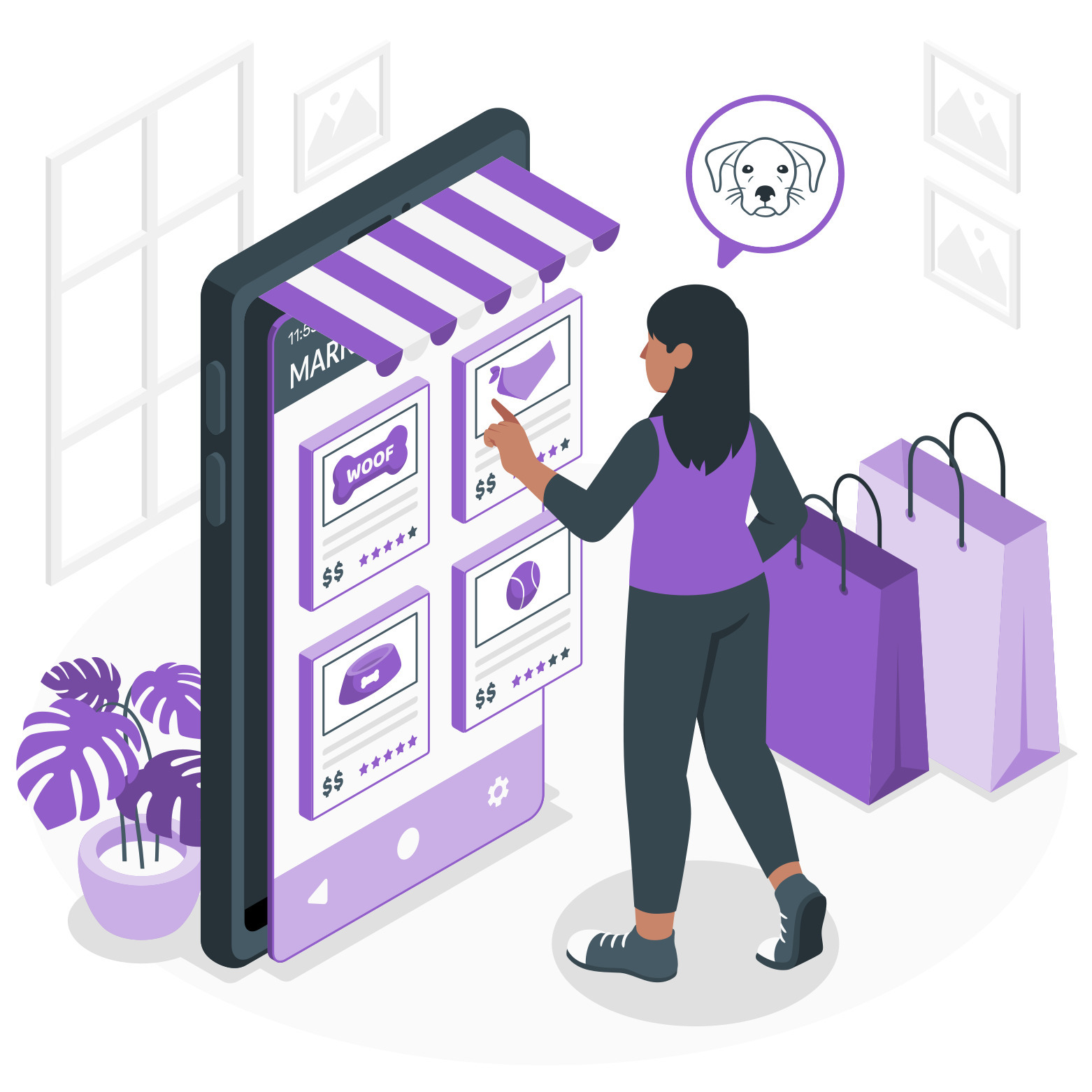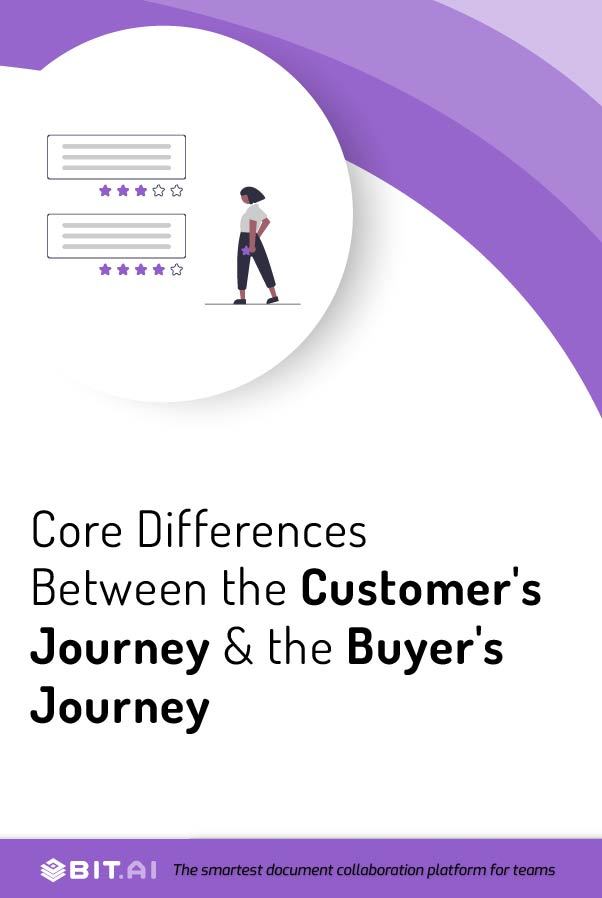Whether you’re acutely involved in marketing or are a literal outsider, one thing is for sure – marketing terms can be confusing. Terms and buzzwords within marketing are vast and varied and can be overwhelming. Some are even used interchangeably to the point that it’s almost the norm to do so.
Two such terms are – The Customer Journey and The Buyer Journey. Now you might think that these terms are the same, however, some key differences set them apart.
As a marketer, you need to understand what makes the buyer’s journey different from the customer’s journey. And if you’re confused, then we’ll make this easy and break it down for you in this blog! Let’s get started!
What is Customer Journey? (Definition)
Think back on all the purchases you’ve ever made in your life – every purchase will involve a buying process before the time of the actual transaction. Such processes are termed the customer’s journey.
The Customer Journey encompasses the entirety of the phases a person goes through before the transaction i.e., from the moment a need is identified until the acquisition of a product to satisfy that need. The duration of the process can vary, from a short time frame (for example buying food impulsively from supermarkets), or can even span months (for example purchasing a vehicle).
So, by definition, a customer’s journey is the set of interactions that a customer has with a brand when purchasing a product or service. This can include everything from product recommendations while browsing, to queries with customer care after the purchase process is finished.
You should, however, keep in mind that the customer’s journey does not only focus on transactions and customer satisfaction after interactions with the brand but that it is a form of strategy by brands to gain insights about the customer’s experience throughout the entire buying process.

What is Buyer’s Journey? (Definition)
Buyer’s Journey refers to the stages that a buyer or consumer goes through leading up to their decision to purchase a specific product or service from a particular company or brand.
A buyer’s journey can be categorized into three main stages, namely – Awareness, Consideration, and finally Decision. We’ll briefly explain these stages so you don’t get confused.
1. Awareness Stage:
This is the first stage of any buyer’s journey. At this stage, the consumer notices a problem or issue and comes to understand that there is a need to address such a dilemma. There is a possibility that during the stage of awareness, the buyer does not know the core of the problem or issue.
2. Consideration Stage :
At the consideration stage, the buyer has already identified what the issue is and understood the problem. So, research the various options available to them to address it. Because they are in search of solutions, they may look at different brands or companies.

3. Decision Stage:
The decision stage is the last stage of a buyer’s journey. It is when a buyer is ready to make a purchase. At this stage, there will be a focus on the details of a product and a comparison from the list of available brands before the final purchase is done.
Although both marketing terms seem quite similar, the customer journey and buyer journey are completely different. Their fundamental differences will be highlighted below so that it’s clearer for you.
Differences between Customer’s Journey and Buyer’s Journey!
1. Focus
The first point of difference between the customer’s journey and the buyer’s journey is that both processes differ in what they focus on.
The customer’s journey encompasses the entirety of phases and interactions that a person goes through before the actual transaction. The activities involved with a customer’s journey extend even beyond the purchase because the customer’s journey aims to not only get people to purchase, but also retain their loyalty to a brand.
Contrary to this, in the buyer’s journey, the focus is laid only on the activities leading up to purchase and does not extend beyond the point of purchase.
2. Nature of Content
A buyer’s journey focuses on creating content that nurtures consumers in their decision-making process by answering queries they have when they have them. A customer’s journey in actuality is a strategy used by brands to retain customers after a purchase has already been made by them. So basically, a person has to go through a buyer’s journey and become a customer, and only then can the strategy of the customer journey start and be put to use by brands and companies.
3. Usage
Due to the nature of the two aforementioned differences in focus and content, the customer journey and buyer’s journey are also utilized differently in the field of marketing. In every brand or company, the buyer’s journey is used by the marketing team while the customer’s journey is used by the customer support team.
4. Strategy
When you really look into it, the buyer journey and customer journey are also different in terms of strategy. The marketing team utilizes the buyer’s journey as a strategy to attract and engage leads. On the other hand, the customer care team makes use of the customer’s journey strategy to delight customers thereby making them loyal to the brand.
5. Engagement
Another fundamental difference between the customer journey and the buyer journey is engagement. A customer’s journey focuses on how customers engage with the website of a particular brand. Contrary to this, the buyer’s journey focuses on how leads engage with the website of a particular brand.
6. Goal
Customer journey and buyer journey also differ in terms of the goals they set. In a buyer’s journey, the goal is to instill trust in the product, values, and position of a specific brand or company consumers. In a customer’s journey, however, the goal is not only to convince consumers to make a purchase but to nurture them and eventually make them brand ambassadors.
7. Timing
Both the customer journey and buyer journey are different when you take into account their timings. For example, a buyer’s journey starts from the stage of awareness while the customer’s journey starts from the point of sale or only after a purchase has been made i.e. when a person has become a buyer. What this basically means is that every customer is a buyer, but not every buyer is a customer.
Summary
We’ve explained how the customer journey and buyer journey are two separate, but overlapping concepts in the field of marketing. Their meaning and differences have been highlighted in the passages above, but it is also essential to remember that they work together in conjunction.
Understanding the buyer’s journey will keep you informed about the status of customers and their relationship with a brand. Likewise, knowing the customer’s journey enables you to empathize with what customers experience with a brand.
In conclusion, building a customer journey that works well with the stages of the buyer’s journey will only be able to help you lead to success.
A thorough understanding of both concepts will enable you to target consumers and convince them to purchase and become loyal customers. This will help them smoothly transition from the buyer’s journey to the customer’s journey.
Further Reads:
Customer Journey Map: Definition, Importance, and Process!
Improve Customer Satisfaction in these 11 Smart Ways!
What is Product Branding? 8 Product Branding Examples!
21 Rock-Solid Ways to Improve Customer Focus in Your Business!
Customer Segmentation: Definition, Importance, Types & Process
Customer Profile: What is it & How to Create it?
Buyer Persona: What is it & How to Create it?
10 Best Customer Retention Strategies for Startups!


